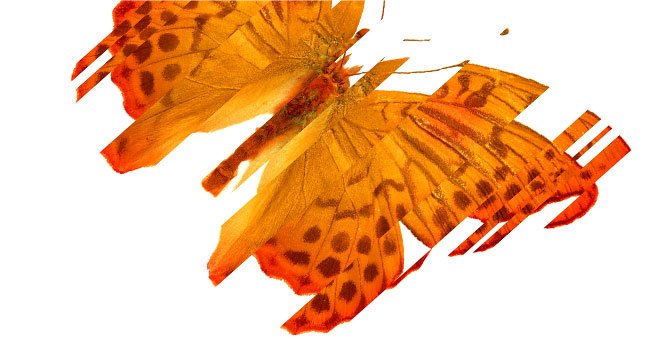
Case study: Applying the Hogan tests to extreme conditions
Sarah Fenwick has been working with the Rivers of Ice expedition team, and they were delighted when Getfeedback offered to sponsor the on-line provision of Hogan ‘bright’ and ‘dark’ side profiling for the team. Sarah has provided us with the following case study:
The challenge
The Rivers of Ice expedition was the first attempt at an unsupported crossing of the Southern Patagonian Ice Cap by a team of two adventurers, Tarka L’Herpiniere and Katie-Jane Cooper. For many different reasons and on many different levels this was to be the most extreme and challenging expedition for both of them.
As their coach I worked with them on tools and techniques to maximise their strengths and minimise the potentially dysfunctional aspects of their personalities that when stressed, tired, cold, hungry, etc might potentially have eroded the quality of their relationship, or worse, derailed the expedition. My challenges were:
- I had less than a month to help them develop their self-awareness and that of each-other
- During the expedition support was restricted to 5-10 minutes by satellite phone (often with poor connection)
The assessment
Both the ‘bright’ and ‘dark’ side of Tarka and Katie’s personality styles were assessed using the Hogan Personality Inventory (HPI) and Hogan Development Survey (HDS).
The HPI test is designed to assess the ‘bright’ side of someone’s personality; that is aspects of the personality that promote success. This assessment can reveal areas of strengths and also some interpersonal tendencies that might cause problems. The HDS test identifies the ‘darker’ side of our personality, revealing what we see when we are stressed. These ‘darker’ sides of our personality can affect an individual’s leadership style and behaviour. Under normal circumstances these characteristics can be strengths. However, when stressed, tired, hungry or otherwise distracted these risk factors may become dysfunctional, impeding effectiveness and eroding the quality of relationships.
Tarka and Katie were given individual feedback and then shared their feedback and learning between themselves. Tools and techniques were then explored to best manage themselves and each other in an extremely challenging environment. The aim was for each to make the most of their strengths and to reduce the impact of potentially dysfunctional behaviours.
Tarka’s HPI (‘bright side’) profile revealed he thrives in high risk situations, is highly ambitious, confident and comfortable in a leadership role. However he may sometimes come across as ruthless, dominant and competitive. He enjoys the bigger picture aspects of the expedition and may struggle to pay attention to the detailed, more routine tasks that may be key to their survival. In a crisis Tarka is likely to remain reasonably calm and make a realistic assessment of the situation before deciding what to do.
On the ‘dark’ side Tarka’s strengths are that he enjoys being somewhat unorthodox in his approach (as evidenced by his strategy for this expedition) and is very self-sufficient. He has a high need for excitement and adventure coupled with ability to realistically assess the situation and focus on what needs to be achieved. However in high risk and high stress situations or when tired and hungry Tarka may not listen to Katie, may be dismissive of her ideas and may struggle to persuade Katie why his solutions/ideas are the best. Psychologically his biggest challenges were to keep his patience, keep talking and involve Katie in the decision making.
Katie’s ‘bright’ side revealed she is highly competitive and comfortable in a leadership role. Whilst Katie is gregarious and enjoys being the centre of attention, she has a highly task and detail focused approach which can lead her to be intolerant and critical if things don’t go her way. Katie prefers learning on an ‘as and when’ needs basis and places importance on other’s opinions. Like Tarka she is able to remain reasonably calm under pressure.
On Katie’s ‘dark’ side she is very enthusiastic and confident in her ability and able to read situations well developing creative solutions to problem situations. However in high risk, high stress situations or when tired and hungry she can be overly confident in her ability and ideas, find it difficult to own up to her mistakes and questioning of Tarka’s decisions. If things don’t go well Katie can lose interest and become frustrated and difficult to please. However, should these situations occur her saving grace is likely to be her drive to succeed coupled with her organised and conscientious approach to this challenging expedition.
Psychologically Katie’s biggest challenges were to ensure that her high levels of confidence coupled with relative inexperience didn’t blind her to the potentially life threatening situations they are likely to experience. And, knowing when to keep quiet and give Tarka his own space, given that Katie enjoys talking and being the centre of attention.
The preparation
From the insight gained using the HPI and HDS tests we focused our preparation efforts on: Together:
- managing their different relationships: as a team, as a couple and as individuals.
- Decide up front who had responsibility for different tasks and who has authority to make the difficult decisions
Katie:
- Thinking through potential ‘what if’ scenarios
- Distraction techniques for managing loneliness and isolation (days of strong winds, zero visibility)
- Communication of her ideas
Tarka:
- Managing frustration and impatience
- Controlling the ‘controllables’
- Communicating and sharing ideas, open questions and listening to Katie’s input.
The outcome
Tarka and Katie travelled across the ice cap for 30 days making good progress towards their goal, in challenging conditions yet still within their physical capabilities. They set the fastest record to the Fella Recchart Cerro Mayo section (75% of the distance) where their tent was destroyed and they made the decision that descending the Spegazzini Glacier was their best exit strategy.
Overall Katie and Tarka rose to and overcame the physical, technical and psychological challenges that were presented to them. Their personality profiles suggested that they were both able to remain calm and rational in high pressure situations and these personality characteristics served them well. They also had strategies to ensure they made the best of each other’s strengths and learnt how to manage their own and each other’s strengths and darker sides.
“The work we did made a difference … I was absolutely thrilled with how I coped and I didn’t feel like a hindrance to Tarka.” Katie-Jane Cooper, adventurer.
And from my point of view“I’m absolutely thrilled my involvement worked so well and that we’ll be working together on future expeditions. HPI and HDS were really valuable tools in allowing us to ensure they successfully managed the psychological challenges as well as the physical ones.” Sarah Fenwick



